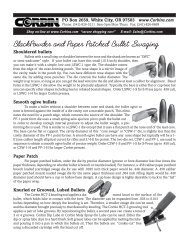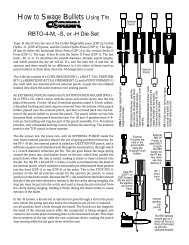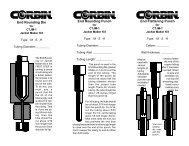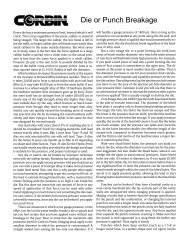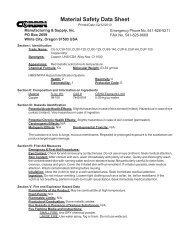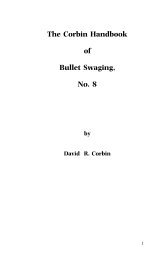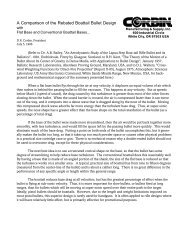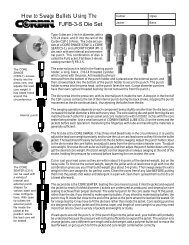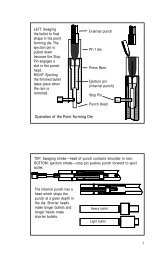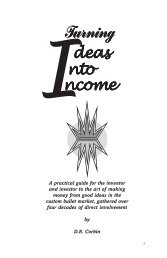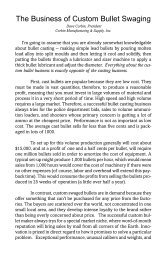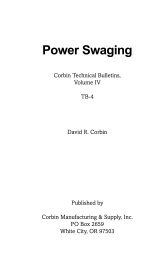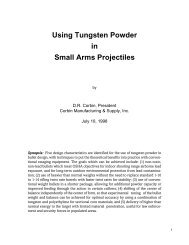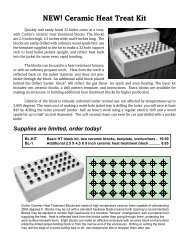HB-9 updated text (PDF) - Corbin Bullet Swaging
HB-9 updated text (PDF) - Corbin Bullet Swaging
HB-9 updated text (PDF) - Corbin Bullet Swaging
You also want an ePaper? Increase the reach of your titles
YUMPU automatically turns print PDFs into web optimized ePapers that Google loves.
The Myth of Equating BC with Accuracy<br />
Another myth is that aerodynamic shape is synonymous with accuracy.<br />
Years ago, I made some bullets that were just cylinders without any<br />
ogive at all, and fired them from a benchrest rifle in .224 caliber into a<br />
group that measured about 0.2 inches center to center. Then I fired another<br />
group made with 6-caliber ogive spitzer bullets made exactly the<br />
same way, with the same weight and diameter and the same materials.<br />
These made almost exactly the same size group. The gun was at its limit<br />
and the bullet shape had no effect on accuracy, except that the cylinders<br />
landed a little lower on the target (more drag, so they dropped slightly<br />
more).<br />
In our work for various government agencies, <strong>Corbin</strong> made dies that<br />
we called the “Ultra Low Drag” or “ULD” design, many years before the<br />
popularity of the so-called “VLD” design of the late 1990’s. The two designs<br />
are quite similar. In fact, nearly all low drag designs that are practical<br />
utilize a long ogive and some kind of boattail. Ours used a nine-degree<br />
rebated boattail, and a 14-caliber radius curve that was offset by 0.014<br />
inches from the tangent (a secant ogive, in other words). There is nothing<br />
magical about the numbers. There are dozens of variations which would<br />
work approximately as well, better in some guns, worse in others.<br />
There is a problem with promoting these buzzword designs: people<br />
tend to believe that they solve all problems of accuracy, when in reality<br />
they are very special designs made for certain kinds of loads, rifling twist<br />
rates, and purposes. They are not always more accurate nor are they even<br />
useful in some guns. Here are some of the problems with the very low<br />
and ultra low drag designs (which means “high BC”, the ballistic coefficient):<br />
To offer less air resistance, the bullet needs to be more streamlined,<br />
which in turn makes it longer for the same weight, or lighter for the same<br />
length as a conventional design. To keep the amount of shank in approximate<br />
balance with the extra long nose (which would fill up with all the<br />
available lead in a normal or light weight design and leave nothing for the<br />
shank), these bullets are usually made in the heavier weights for the caliber.<br />
This means that the long, heavy bullet has the center of balance shifted<br />
toward the rear, so it wants to turn over more easily than the conventional<br />
bullet, and thus requires a higher twist rate to stay nose first. If you have<br />
a barrel with the appropriate faster twist, you may get a flatter shooting<br />
bullet with equivalent accuracy to a normal design. Since the custom<br />
swaged bullets are usually made with more care than mass produced bul-<br />
33



